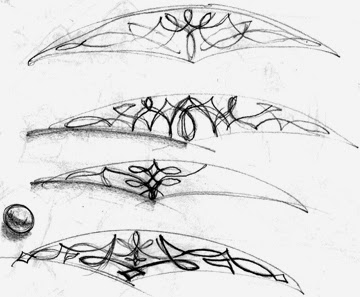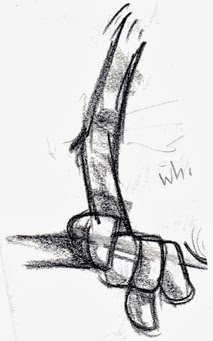Mine become essays, with themes and thorny puzzles, questions and frayed answers, and denouement, tidy or no.
I write and rewrite them at 72 mph.
Since most trips lately take us on Interstate 5, the long straight stretches across the Sacramento Valley set the drone for mental proofreading.
Except I don't really know the theme for last weekend's trip. Surrender? Futility, with faint light of redemption?
Lake Shasta is low — summer low. In the state's worst drought ever, the lake has such little water to collect from the Cascades and release into the Sacramento River.
The great rusted belt of earth exposed by the dropping water is lovely and terrible.
A path has been carved into the orange earth under the I-5 bridge so that boaters can descend to the marina and get to their slips. No one seemed to be boating what is left of the turquoise water as we passed.
Oregon's southern rivers — the Klamath, the Rogue, the forks of the Umpqua, the Willamette, the McKenzie — already roll in their summer somnolence, fast but thin, sheening shallow over riprap. Oregon is in drought too, though it's more difficult to see in the evergreen damp along the freeway.
We had taken my mom-in-law back home, after more than three months in Northern California, to visit and have surgery and recuperate. It occurs to me after dropping her off and tending to a little spring cleaning that she will be by herself for the first time in decades. My dad-in-law passed away last year. One of her sons had been living nearby, but he came down with us before Christmas and lives around here now.
She is strong and ready to be back with her forested and terraced community of retirees, which instantly embraced her. A resident busily scrubbing around the trailer waste disposal site recognized us somehow and asked Nancy how her mom is doing. It is community with a capital C.
She has much to do and much she wants to do.
I drove solo on the way up; Nancy rode with her mom in her car. Flipping the radio in a failed search for spring training baseball, I got Oregon State baseball for a brief moment, from a broadcaster who sounded like he was doing a Vin Scully impersonation, right down to the hissing lisp and the skirling Bronx vowels.
That's the thing with radio in southern Oregon: Brief moments. National Public Radio is handed off from tower to relay tower, signal crackling for 20 minutes before fading; if you're lucky, the station will list the other frequencies so you can catch the rest of the story on another station before its last raspy detail.
Christian radio knows no barriers here. Their signals stay strong even in the narrowest gorges. If you don't want one station, another is just a few blips away, just as strong.
Their broadcasters seem to talk a lot about "creation science." I hung with one program, the upshot of which was that the lack of fossil evidence for any transition of one creature into another proves "creation science's" point that creation diversified rapidly in the few thousand years the universe existed. "Creation science," the show host said, is more relevant than ever and needs to be taught in schools.
I processed that. So, because scientists haven't found a complete fossil array of related creatures, and "creation scientists" discount what they have found and the agreed-upon (except for "creation science") methods for how old they may be, then "creation science" wins by default?
A commercial on the station promoted books that parents can share with their children to bolster the creation story, including diagrams showing children how all the animals could fit on Noah's ark.
Why — why are we still talking about this? I sighed. Why is this not settled? Why can't we worry about other things, like how Syria and the Central African Republic are human butcher shops, how Nigeria's people burn at terrorists' torches, how Russia does whatever Russia seems to be doing to the people of Ukraine. Why can't we move on? What century is this?
We lumber in retrograde.
As for redemption … I look for hooks to snag hope. The reservoir near my mom-in-law's place is full, as is my beloved Lake Natoma, full for now. Their high levels are mysteries to me, or maybe I just choose to think that, water suspended in disbelief.
My mom-in-law prays for Nancy, prays for me, prays for all of us, just as her husband did. Prays for all the world's woes, which is sometimes what is left to do.
In the dipping turn of the freeway I find slack, then momentum.





























